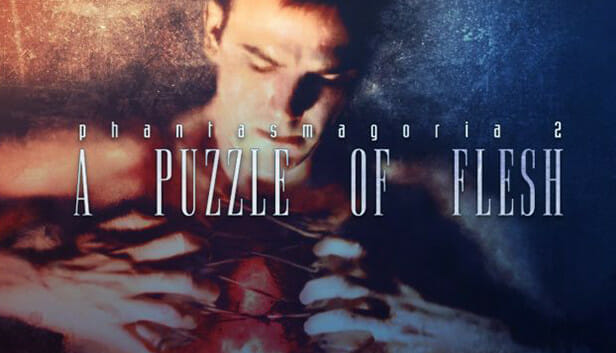Before we had Ellie and Dina, Hammerlock and Wainwright, Snorpy and Chandlo, or any other outstanding 21st-century queer characters, we had only the faintest glimpses of authentic LGBTQ representation in video games. The lack of inclusion in pre-2000 era games is, unsurprisingly, a reflection of the level of social acceptance toward the LGBTQ community during that time. If you look hard enough, though, you can find some minor characters like Vivien Pentreath in Moonmist (1986) or the unnamed lesbian flapper in The Dagger of Amon Ra (1992). As for major studio games that have multiple prominent, canonical, authentic LGBTQ characters, you’ll find none.
Sorry, did I say “none”? I meant exactly one: the inexplicable outlier of a game Phantasmagoria: A Puzzle of Flesh. This horror adventure from Sierra On-Line was released in 1996 as a follow-up to Roberta Williams’ phenomenally successful Phantasmagoria. The story of A Puzzle of Flesh is unconnected to that of the original game, instead following the tribulations of Seattle-based office worker Curtis Craig. Curtis is canonically and identifiably bisexual in the game, making him arguably the first playable LGBTQ protagonist in gaming history (among commercial games, at least). And his best friend, coworker, and love interest, Trevor Barnes, is an out-and-proud gay man. While the game has its fair share of problematic elements, its LGBTQ representation is remarkably progressive for the period in which it was released.
The campy and quintessentially 90s plot of Phantasmagoria: A Puzzle of Flesh is complicated and messy, so I won’t attempt to dissect it here. If you haven’t played it, I recommend picking it up on Steam or GOG (the GOG version seems to be higher quality, but be aware: I had to manually update the bundled version of ScummVM to avoid crashes). If you’d rather learn more about A Puzzle of Flesh without playing it, then you’re in luck, as both the game and its contemporary social context have been extensively documented by VoidBurger in her excellent (dare I say definitive) video essay “A Puzzle of Flesh in an Era of Strife.”
As a nice bonus, VoidBurger even shares a bit about GLAAD history, including our 5th Annual GLAAD Media Awards and the “Come Out With Ellen” house parties organized by GLAAD. LGBTQ acceptance has certainly come a long way since the ’90s when hope was a lot harder to muster. GLAAD is proud to have played a role in driving that cultural change and won’t stop until we’ve achieved 100% acceptance for the LGBTQ community.
Phantasmagoria: A Puzzle of Flesh might not have changed the world overnight, but its authentic LGBTQ storytelling absolutely helped move the needle for acceptance, at a time when it was desperately needed. And still, today, 25 years after release, the game continues to inspire and empower LGBTQ people through its renewed popularity and cult following.
Coincidentally, actors Paul Morgan Stetler and Paul Mitri—who played Curtis and Trevor, respectively—are doing a livestream tomorrow (Saturday, 6/26) at 10am Pacific/1pm Eastern to celebrate the game’s LGBTQ legacy. This Pride Month stream is the latest in Stetler’s “Conversations with Curtis” interview series to commemorate and catalog the game’s production. If you’re interested in LGBTQ gaming history and have the time, I highly recommend you tune in.













